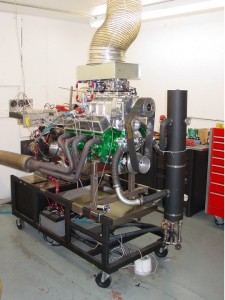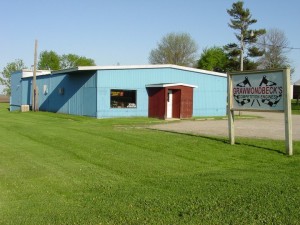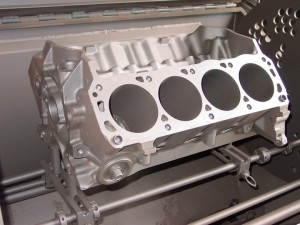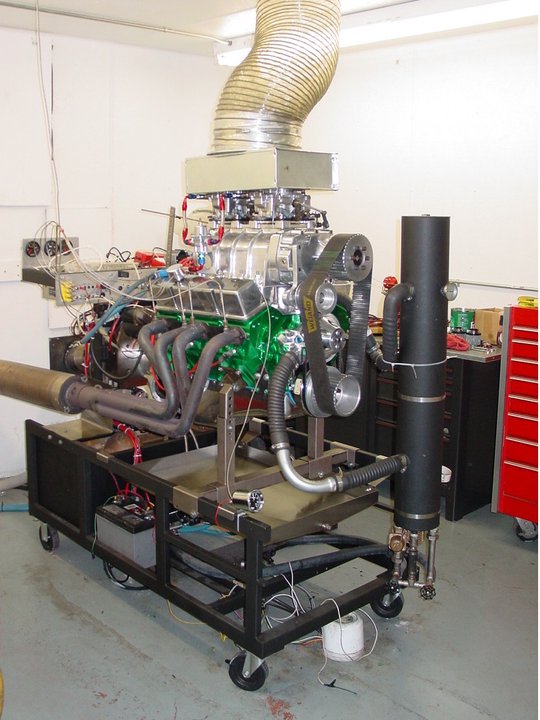
Customer sales reps (CSR) who work for your local W.D., or any parts person for that matter, are expected to not only take orders, but are often times called upon to choose the parts a shop will use for a build or repairs.
Reps may be asked to help diagnose a problem or failure without ever seeing the vehicle, and they may have no previous hands-on experience with the application.
They’ll be the first person you turn to find parts for a very new application or a very old obsolete part. They are liaisons to parts manufacturers when you have a problem with a part, and often a pair of ears when you just have a personal problem. I know of one CSR who encouraged a tired and burned out machine shop owner into taking a vacation that led him to a new career in a very desirable place to live.
We’re going to put a rep to the test this year. If you saw the December issue of Engine Builder, I hope you had a chance to check out the Profitable Performance column titled, “For The Love of A Good Cause.”
The Plan
In that column, we introduced our 392 Magnum engine build and our plans to raise money for a worthwhile charity, The Independence Fund. And that rep for the job, well, that would be me.
Spawned from a previous article I wrote which ran in 2010, we’re going to take a dare to be different approach, use shelf stock parts that anyone might work with everyday, and apply them to a less than popular performance application. And I’ll be making those choices. Of course the application will dictate what’s available, and I’ll work with various parts manufacturer’s recommendations.
The Players
I’m just one of the players, though, and besides finding and choosing the parts, I’ll also be reporting on our progress and relating it to business through these columns. Like any good plan, we do have a team. Engine building is much more than the parts. We needed a good fully equipped shop, experienced performance machinists and a dynamometer to report how we’ve done.
I was lucky enough to get a call from Joe Degraw of Grawmondbeck’s Competition Engines, Mason City IA, who volunteered to help.
Steve Tosel, also of Grawmondbeck’s, had been kind enough to find and supply us with our 318 Chrysler core motor. I guess Joe and his partner Stacy Redmond had discussed our project and decided they wanted in. And we’re excited to have them.

Like many shops today, this one known for their winning race motors, will also tackle a stock rebuild, a restoration motor, AG and industrial motors and all sizes of cylinder heads. And much like many of your shops, you can find any combination of these lined up on engines stands on any given day.
And, as an added bonus, I have Steve Tosel, an avid Mopar racer, to turn to for advice and hopefully a few Mopar tricks. Another nice feature is a complete dyno cell on premises and all the hookups we’ll need for our big inch small block Chrysler, thanks again to Steve.
I’ve known and worked with these professionals from Iowa for many years. You were probably first introduced back in 2006 when the small block Chevy they built took first place in the first ever AERA E85 Engine Buildoff, which was sponsored by Engine Builder.
But the story does not stop there – 2008 brought to the industry a second E85 build competition and the guys from Mason City proved their knowledge of building horsepower with any fuel type by taking first place – again.
The Parts
We’ve got the people and a place, now the fun part. Much like a new job in your own shop, we’ve been developing a parts list specific to our needs. A stroker motor needs a stroker crankshaft. Ours comes to us from Scat Enterprises. We’ll use their 4340 steel, standard weight 4.00” stroke 340 main journal crankshaft. Since our 318 shares the same journal sizes as the higher demand 340, this choice was easy.
In December’s Profitable Performance article, I suggested the plan for our build was to come up with a muscle motor the factory had missed. Your late 60s and 70s Mopar performance engines all came with steel cranks, and that’s what we’ve chosen. This engine is also designed for street driving and durability, so we won’t go with lightweight components.
To connect our stroker crank to the appropriate compression height pistons we’ll be using a set of Scat Pro Comp series 4340 I-beam connecting rods. For the horsepower and torque we are shooting for, these will be perfect. And the truth is, a set of stock rods could be prepped with a good set of rod bolts and reconditioning to meet the need of a customer with a smaller budget, but we are planning to ring this motor out on the dyno and part of the goal was to upgrade for a more durable motor than a stocker. These are also bushed for a full floating wrist pin. Just like the 340 factory muscle motor.
MAHLE Clevite will get the nod for the bearings for our crank to spin on. Since we went for a steel crank with large radius fillets, we’ll be using an “H” series performance bearing.
Our performance mains feature a grooved upper shell and non-grooved lower. The rod bearings are chamfered and narrowed to fit the rod journals. All journals are standard Chrysler dimension. No small block Chevy rods or journals here — it’s an all Mopar design.

At the business end of the connecting rods we’ll hang our shelf stock stroker piston. A set of ICON dished pistons specifically for this application, in a .040” oversize will net us our 392 cubic inches with the 4” stroke crank. Again, our premise is to shop the books for parts you might otherwise overlook to net a performance engine from our original grocery getter. Adding 74 cubic inches to our little V8 should really wake things up. But adding that many inches, 9.25 ci per cylinder, will certainly raise the compression ratio to something beyond pump-gas if we stick with a flat top design. That is why we’ve chosen a more streetable dished head designed for something around 9.5:1 static compression ratio. These beautiful forgings are made from a very durable 2618 alloy, feature a .120” wall pin that is standard .984” Chrysler diameter to work with a stock or aftermarket connecting rod.
Our IC847 ICON pistons are machined for a 1/16” x 1/16” x 3/16” ring pack. This might be a little narrower than Chrysler would have used in the day, but with current piston ring technology we should have no problems. Factory motors today may come with a thinner ring pack, and we all know how long today’s engines can last.
So for rings we’ve turned to our friends at Engine Pro. I would have liked to have used a set of the new Nitro Black performance rings, but our Dare-To-Be-Different bore size won’t allow that, at least not at this time. But they did come through with a set of nodular iron plasma moly standard tension rings that will have no troubles sealing up out fresh .040” oversize cylinders.
To round out our rotating assembly, we’ll use a standard Chrysler style flex plate and a street performance, fully degreed harmonic balancer from Engine Pro. The whole assembly will be balanced by Joe and Stacey at Grawmondbeck’s who will also clean and machine our 318 block to spec.
The shortblock build should be pretty straight forward. Durabond cam bearings and a brass plug kit from Melling Tool. We’ll also replace all the block hardware with a Finish Kit, also from Durabond. Again, all typical parts used in your shops everyday. This should net us a strong and dependable shortblock worthy of a Muscle Car installation.
Like any good plan, once you see things moving in the right direction, it’s hard to not focus on the completion.
And I’d like to remind everyone to check out the Independence Fund (www.independencefund.org). This plan will not be successful without serious participation by not only our gracious parts suppliers and our talented knowledgeable machinists, but also you. It will be your support and financial participation in our raffle that will bring this plan to a successful ending.














